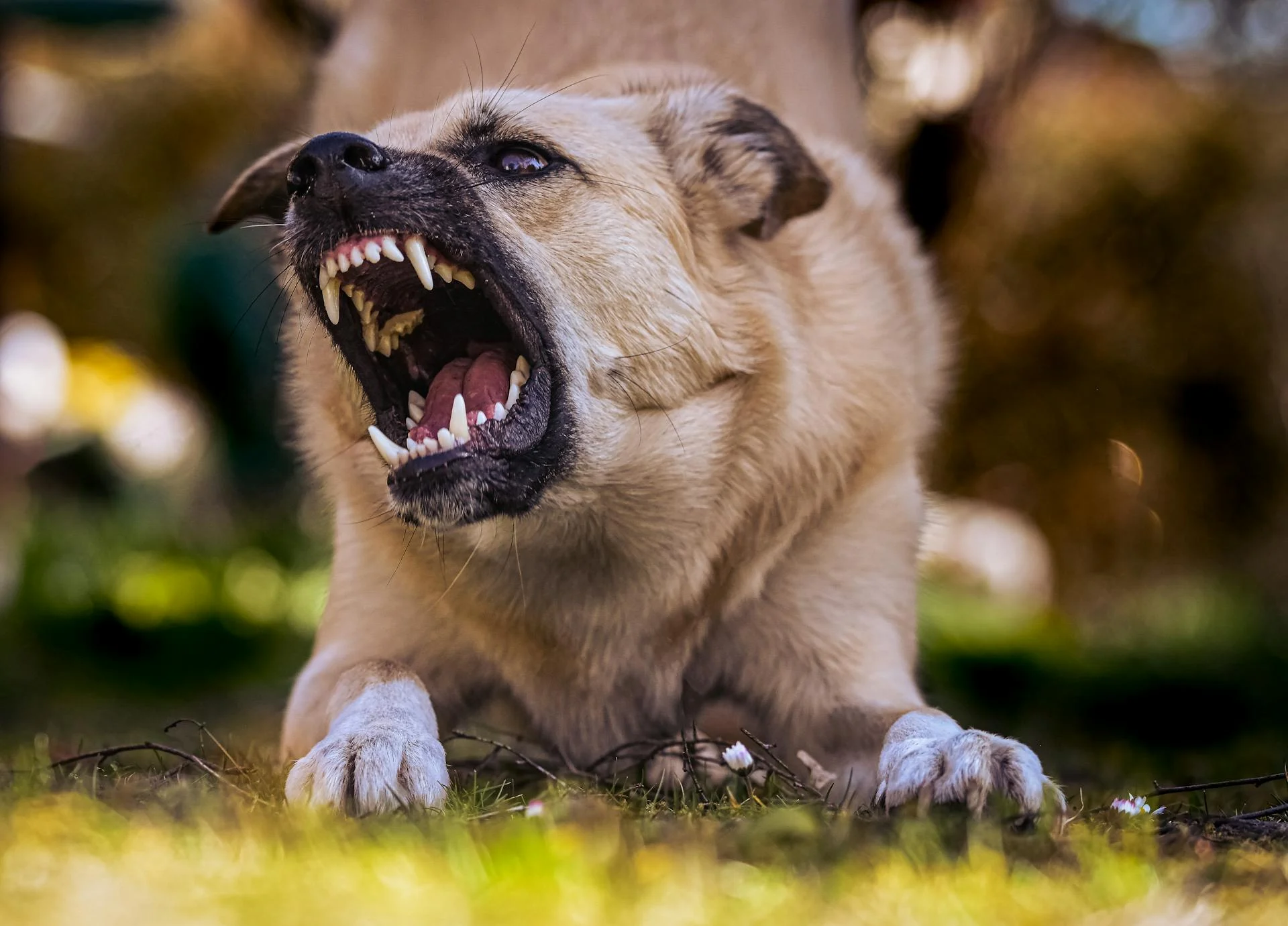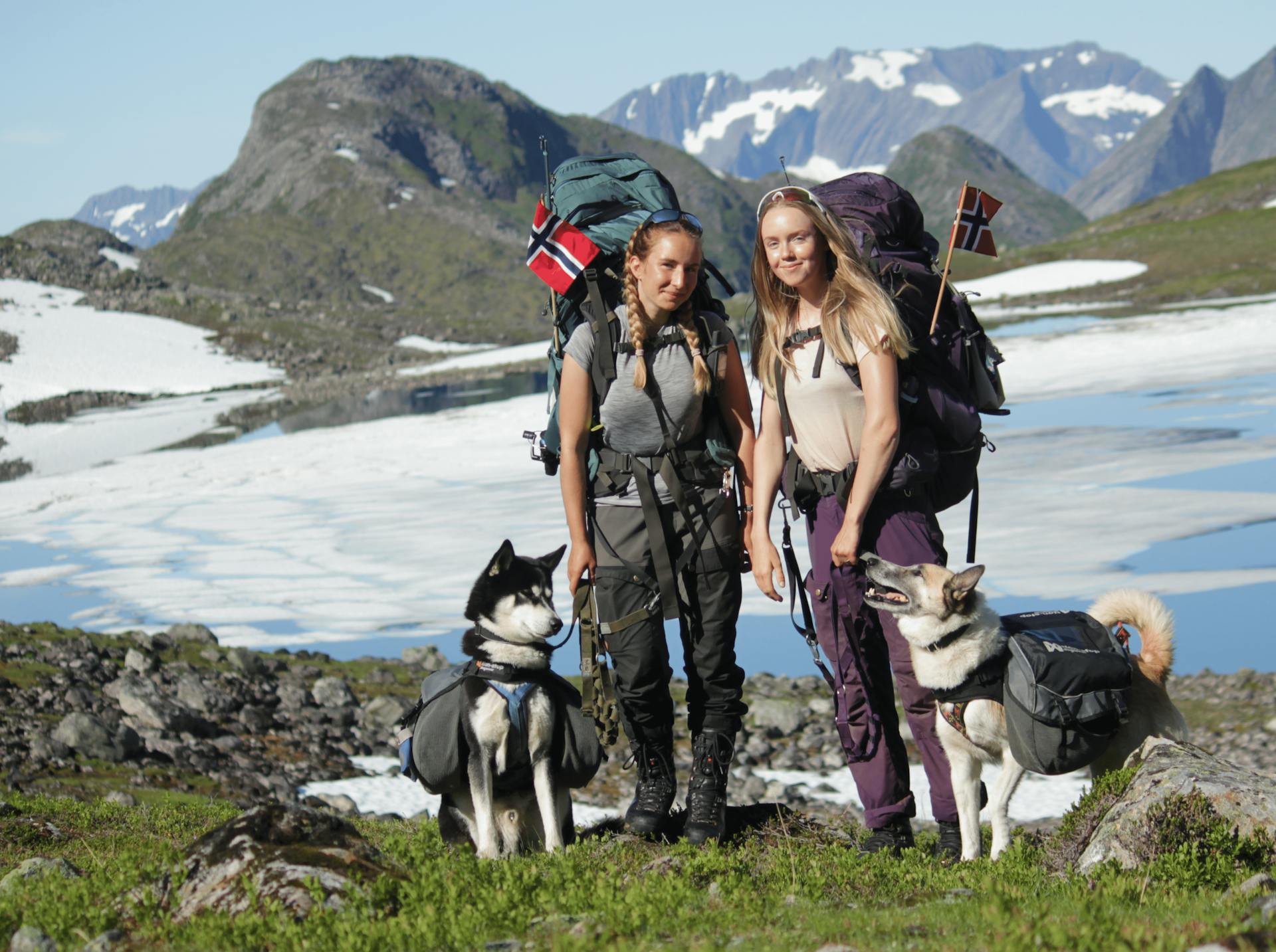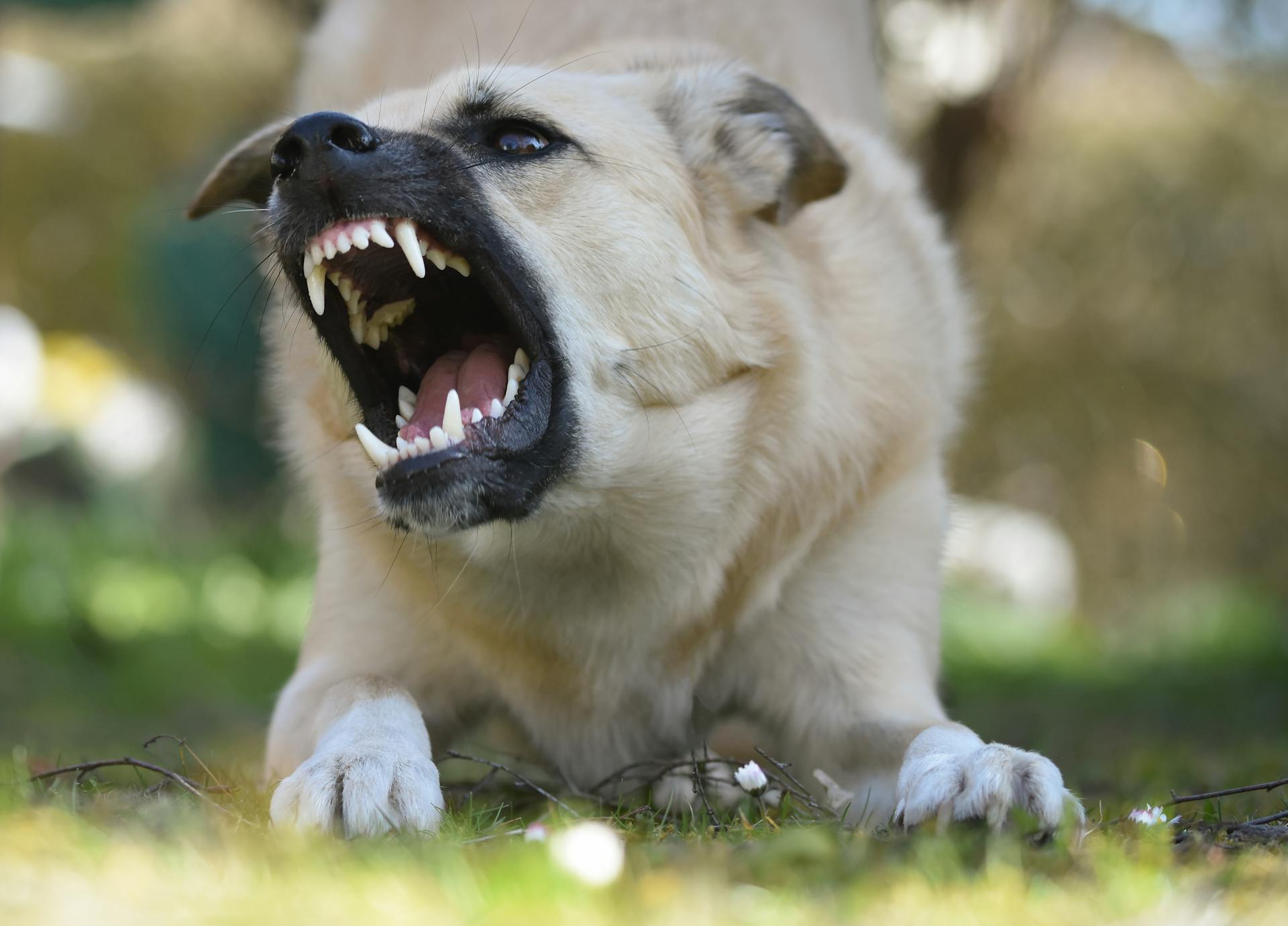
Preventing dog possessive aggression requires early socialization and training. This can start as early as 8 weeks old, when puppies are most receptive to new experiences.
A key factor in preventing possessive aggression is to avoid overindulging your dog, especially with treats and toys. This can create an unhealthy attachment and lead to possessive behavior.
Some breeds are more prone to possessive aggression, such as those with a strong herding or guarding instinct, such as German Shepherds and Rottweilers.
Discover more: Dog Possessive of Female Owner
Understanding Possessive Aggression
Dogs can be possessive of just about anything, causing them to guard food, toys, bones, sticks, a dog bed, or even another dog or a person. This possessiveness can manifest in various ways, ranging from barely noticeable to very serious aggression.
A stiff posture, a cold stare, or a growl if someone approaches are all common signs of possessiveness in dogs. These body language cues can be subtle, but they're often a clear indication that your dog is feeling protective of something.
Some dogs will follow through with a snap or a bite if they think a dog or person is trying to take the item, while others will lunge and bark ferociously. Others may just clamp onto the item, refusing to let go.
Here are some additional signs of possessiveness in dogs:
- Running away to hide with the item
- Raised hackles
- Licking their lips
- Raising their lips and showing teeth
- Crouching or moving slowly
It's essential to remember that possessiveness can range from mild to severe aggression, and it's not always directed at other dogs. Sometimes, dogs are possessive towards people as well, making it crucial to understand and address this behavior.
Possessiveness can be a complex issue, and every dog and situation is unique. However, by recognizing the signs and taking steps to address this behavior, you can help your dog overcome possessiveness and develop a more confident and relaxed demeanor.
Recognizing Signs and Types
Dogs can display possessive aggression in various ways, depending on the situation and their individual personalities. Some dogs may only show aggression in connection with a specific object, while others may become aggressive over anything they find around the house.
A stiff posture, a cold stare, or a growl when someone approaches can be signs of possessiveness in dogs. Some dogs will follow through with a snap or a bite if they think a dog or person is trying to take the item.
Some common warning behaviors to look out for include ignoring you when you ask them to drop something or refusing to give up the item when you ask. Hoarding their toys and treats away from others, growling at other animals or people when they approach their food bowl, and growling or snapping when someone tries to take away their toy or bone are also signs of possessive aggression.
Here are some specific signs of possessive aggression to watch out for:
- Ignoring you when you ask them to drop something or refusing to give up the item when you ask
- Hoarding their toys and treats away from others
- Growling at other animals or people when they approach their food bowl
- Growling or snapping when someone tries to take away their toy or bone
- Showing signs of jealousy, such as head-butting another dog when you are petting them
Every dog is unique, and their behavior can range from barely noticeable to very serious aggression.
They Misinterpreted Their Behaviour
Many owners misinterpret their dog's behaviours, thinking they're normal or cute, but in reality, they're problematic. This can lead to a dog's possessiveness growing worse over time.

Dogs can be possessive of pretty much anything, causing them to guard food, toys, bones, sticks, a dog bed, or even another dog or a person. This can be a sign of a deeper issue.
If owners don't recognize the dog's initial behaviours as problematic, they'll never stop or correct the dog from doing the behaviour. By not stopping the behaviours, they continue, grow worse, and then spread into other aspects of the dog's functioning.
As a result, owners may inadvertently foster, reward, or allow their dogs to exhibit possessive behaviours.
Territorial
Territorial behavior in dogs can manifest in various ways, such as showing aggression over his home/territory, certain objects, or his food.
Dogs that exhibit territorial behavior can be prone to being possessive and aggressive, making it crucial to start training early to counter-condition the dog and establish leadership.
If left unaddressed, territorial behavior can quickly escalate into a bigger issue, making it essential for owners to take proactive steps to address this behavior.
If this caught your attention, see: Breaking Dog Territorial Aggression
Male dogs, as well as certain breeds, are more prone to displaying territorial behavior, making it vital for owners to be aware of these tendencies.
Establishing clear boundaries and rules from an early age can help prevent territorial behavior from taking hold, and early obedience training is a must for any dog that exhibits this type of behavior.
By establishing leadership and setting clear expectations, owners can help their dogs feel secure and reduce the likelihood of territorial behavior.
Related reading: Will Spaying Help with Dog Aggression
The Different Types
Dogs can be possessive of just about anything, including food, toys, bones, sticks, a dog bed, or even another dog or a person.
Some dogs may only display aggression in connection with a specific object, while others may become possessive over nearly everything in the house.
A stiff posture, a cold stare, or a growl if someone approaches can be signs of possessiveness in dogs.
Dogs may follow through with a snap or a bite if they think a dog or person is trying to take the item, or they may lunge and bark ferociously.
A different take: My Dog Bit the Amazon Delivery Person

Here are some common signs of possessiveness in dogs:
- a stiff posture
- a cold stare
- a growl if someone approaches
- running away to hide with the item
- raised hackles
- licking their lips
- raising their lips and showing teeth
- crouching or moving slowly
Different dogs display aggression in different ways, ranging from mild growling to nipping or biting.
Some dogs may only display aggression in certain situations, such as when eating or playing with a specific toy, while others may become aggressive over a wide range of situations.
Possessiveness can escalate over time if left untreated, starting with small growls and progressing to snapping and biting.
Early recognition of warning signs is crucial in treating possessiveness in dogs.
Here are some warning behaviors to watch out for:
- Ignoring you when you ask them to drop something or refusing to give up the item when you ask.
- Hoarding their toys and treats away from others.
- Growling at other animals or people when they approach their food bowl.
- Growling or snapping when someone tries to take away their toy or bone.
- Showing signs of jealousy, such as head-butting another dog when you are petting them.
Prevention and Training
Train your dog early to prevent possessive aggression by showing them that you handling their food or other possessions does not result in anything negative. This can be done by calmly approaching them while they're eating, softly talking to them, and petting them.
Get a treat pouch to conveniently hold all your treats during training sessions, and use high-value treats like Wellness Well Bites to keep your dog interested. Clicker training can be very helpful, even if you're not a "clicker trainer", and get a Mighty Paw clicker to mark the exact moment your dog does the correct behavior.
Teach your dog "leave it" and "drop" by incorporating a command, starting with "leave it" to mean "do not touch", and then gradually adding "drop" to the mix. Practice in different environments and with different items over several weeks and months to reinforce learning.
Why Am I Doing This?
Understanding why your dog is exhibiting possessive behavior is key to addressing the issue. This behavior is often a learned and reinforced behavior that owners have fostered or allowed their dogs to do.
It's essential to recognize that possessiveness in dogs is not an inherent trait, but rather a behavior that has been shaped by their environment and interactions with their owners.
By acknowledging this, you can start to take steps to prevent and address possessive behavior in your dog.
Teaching your dog the "leave it" and "drop" commands can be an effective way to address possessive behavior. These commands can help your dog learn to release items and objects when asked.
The "leave it" command, in particular, can be easier to teach and practice, especially when your dog doesn't already have the object in their mouth. Rewarding your dog for showing self-control and not touching the object can help reinforce this behavior.
See what others are reading: Does Cbd Help with Dog Aggression

Giving your dog more valuable resources can also be an effective way to address possessive behavior. By replacing the object they're guarding with something even more valuable, you can teach your dog that there's no need to protect their things.
This can be done by using the "drop it" command to get your dog to give up the item, and then rewarding them with an even better treat or toy.
Lack of Supervision
Lack of supervision can be a significant contributor to possession aggression in dogs. This is because dogs that are not clearly shown what behaviors are acceptable may assume that their own behaviors are fine.
Dogs need consistent supervision, leadership, and guidance to understand what is expected of them. If owners don't provide this, dogs will set their own limits and boundaries. This can lead to problems like possession aggression.
Some dogs may even learn resource guarding behavior from their mothers or littermates, as young as a few weeks old. This can be a challenge for owners to address later on.

A lack of socialization skills can also contribute to possession aggression. Dogs that don't understand how to politely interact with humans may become possessive and aggressive. This is especially true for shelter dogs that have spent a long time in an animal shelter.
Here are some common signs that a dog may be lacking in supervision:
- Resource guarding over food bowls or toys
- Squabbles with other dogs in the household
- Growling or snapping at owners or other pets
Train Them Early
Training your dog early on is crucial in preventing possessive aggression. The most effective way to prevent this behavior is to train your dog while they're still a puppy. Showing them that you handling their food or other possessions does not result in anything negative can help deter this behavior from developing.
By training your dog early, you can teach them that approaching their food or other possessions is not something to feel threatened by. You can start by calmly approaching them while they're eating, softly talking to them, and petting them. You can also drop some extra tasty treats into their bowl at the same time.

This approach can also be used with their toys. Once they seem comfortable with this, you can start gently restraining them and taking their bowl away, followed by praising them and returning their bowl. Consistency is key in this training process.
Here's a simple training plan to get you started:
Remember, every dog is different, and it's essential to tailor your training approach to your dog's unique needs and personality.
Boost Physical Exercise
Boosting physical exercise is a crucial aspect of prevention and training. Regular physical activity can help reduce the risk of chronic diseases by up to 30%.
Aiming for at least 150 minutes of moderate-intensity aerobic exercise or 75 minutes of vigorous-intensity aerobic exercise per week can have significant health benefits. This can be achieved through activities like brisk walking, cycling, or swimming.
Increasing muscle strength through resistance exercises can also improve overall health. Research shows that engaging in muscle-strengthening activities at least twice a week can help reduce the risk of injury and improve bone density.
Staying hydrated is essential during and after exercise. Drinking enough water before, during, and after physical activity can help prevent dehydration and reduce muscle cramping.
A unique perspective: 2 Week Dog Training
Hire a Professional
Dog aggression is a very serious behavior problem that can easily escalate and get out of control if ignored.
If you find yourself not making any improvements with your own methods or your dog's behavior is a bit too aggressive for you to handle on your own, the best option may be to bring in a professional dog trainer.
A professional trainer will be able to evaluate your dog and tell you some additional ideas for your unique situation.
Aggression is serious, and I do not want anyone to get hurt. A professional trainer will be able to observe you and your dog in a biased, non-emotional way.
Your best bet is to find a trainer such as one with a lot of experience with aggressive dogs and is an expert in dog behavior modification.
Under no circumstances should you choose a trainer who uses excessive force or punishment.
Explore further: How Do You Become a Dog Trainer for Service Dogs
Resource Guarding
Resource guarding is a common issue in dogs, where they become possessive and aggressive when protecting a resource, such as food, toys, or even a person.
Dogs can be possessive of pretty much anything, causing them to guard food, toys, bones, sticks, a dog bed, or even another dog or a person.
Some dogs are just as likely to snarl and snap over a tissue fished out of the trash can as over a favorite toy, showing that resource guarding can be triggered by anything that a dog considers valuable.
It's essential to address resource guarding issues quickly, as they can easily escalate and get out of control if ignored.
A good rule to follow is that people should always be allowed to take anything from the dog, even if it's something that "belongs" to them.
This means not making excuses for your dog's possessiveness and not allowing them to snap at someone who tries to take something from them.
The "nothing is free" idea is also crucial in addressing resource guarding, as it teaches dogs that they don't own everything and that others have the right to take things from them.
To stop resource guarding, you can use high-value treats, a treat pouch, and a clicker to mark the exact moment your dog does the correct behavior.
Here are some effective training tools to stop resource guarding:
- High-value treats, such as Wellness Well Bites
- Treat pouch to hold all your treats during training sessions
- Clicker to mark the exact moment your dog does the correct behavior
If your dog is already holding an item in their mouth, a firm "no" or "drop" may work, or even a firm tug on the leash as a correction, followed by a reward for dropping the item.
However, if your dog doesn't release the item, don't keep tugging on their leash, as this can cause more arousal or fear and even lead to aggression.
Sources
- https://www.snowdog.guru/fixing-jealous-over-protective-and-possessive-behaviour/
- https://www.thesprucepets.com/possession-aggression-in-dogs-1117872
- https://www.thatmutt.com/how-to-break-a-dogs-possessiveness/
- https://qualityk9.com/portfolio/dog-aggression/
- https://bondivet.com/blogs/dog-behavior-training/possessive-aggression-in-dogs
Featured Images: pexels.com


